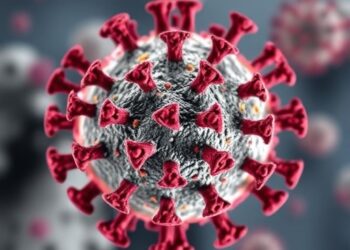Suicide is an incredibly complex issue, particularly when it pertains to children and adolescents. A recent study has delved deep into the patterns, causes, and triggers associated with suicide in these vulnerable populations. This titanic subject, rife with emotional and psychological factors, has garnered attention across the globe, raising questions about why the younger generation is at increasingly higher risk. Researchers like Kılınç and Şener have focused their lenses on this alarming phenomenon, striving to bring data and insights that can illuminate the issue and foster preventive measures.
The onset of mental health crises in minors often leads to devastating consequences, yet many observers fail to recognize the early warning signs. The research conducted by Kılınç and Şener has illustrated that suicide patterns in children and adolescents are not random; they are expressions of deep-seated emotional turmoil stemming from various influences, including familial, social, and environmental factors. Understanding these patterns is crucial for families, educators, and policymakers alike as they aim to create safer, more supportive environments for younger individuals.
One of the most concerning revelations made in the study is the role of social media in exacerbating feelings of isolation and despair among young people. The digital environment, while providing connectivity, can also serve as a breeding ground for bullying and negative self-esteem. Kılınç and Şener emphasize that these platforms can magnify underlying issues, creating a cycle that is difficult to break. With the prevalence of social media in daily life, it’s imperative that educators and parents remain vigilant and take proactive steps to monitor online interactions.
The study further identifies a range of psychological and situational factors that can lead to suicidal ideation. Mental health disorders, such as depression and anxiety, are often present in those who consider or attempt suicide. Kılınç and Şener outline how these conditions can often be exacerbated by external pressures, including academic performance and peer relationships. By mapping out these interconnected elements, the research highlights the need for a holistic approach to mental health care for young individuals.
Moreover, Kılınç and Şener’s research underscores the importance of early intervention. When mental health issues are identified and addressed promptly, the likelihood of suicidal behavior diminishes significantly. The researchers advocate for training among educators to recognize the signs of distress in students. Schools should adopt mental health programs that prioritize emotional well-being alongside academic achievement. This dual approach can create a safer framework within which children can flourish.
The study also sheds light on the cultural dimensions of suicide among children and adolescents. Different socio-cultural backgrounds can significantly influence how youths express their distress. Kılınç and Şener provide evidence that varying cultural perceptions of mental health lead to different coping mechanisms and, regrettably, diverse rates of suicide. This cultural lens is essential for understanding how best to approach prevention strategies on a global scale.
Family dynamics are another critical element explored in the assessment of suicide patterns. The researchers found a strong correlation between dysfunctional family environments and increased risks of suicidal behavior in children. Factors such as domestic violence, substance abuse, and mental illness within the family unit can exacerbate the challenges faced by young individuals. Kılınç and Şener encourage family-oriented therapy programs that emphasize communication and support, further stressing the necessity for comprehensive family assessments in mental health care practices.
As the study moves through its findings, it becomes apparent that education systems play a pivotal role in shaping the mental health landscape for children and adolescents. School curricula, which often lack adequate mental health education, need recalibrating to include emotional intelligence and resilience training. This proactive stance can equip young individuals with the tools necessary to navigate life’s vicissitudes, potentially decreasing the incidence of suicidal thoughts and actions.
Kılınç and Şener also highlight the significance of community involvement in addressing mental health issues. Local organizations and community leaders should take initiative by fostering programs that promote mental wellness. Communities that engage with families to provide resources, education, and a support network can create an environment where young individuals feel valued and understood. This sense of belonging is critical in alleviating feelings of isolation that often precede suicidal ideation.
The media has a responsibility as well, as highlighted by Kılınç and Şener. How suicide is portrayed in television shows, films, and news articles can either mitigate or exacerbate the situation. The researchers call for ethical reporting standards that focus on mental health awareness and promote help-seeking behavior rather than sensationalizing tragic outcomes. Public awareness campaigns can shift narratives towards hope and recovery, rather than despair and tragedy.
Another essential consideration that comes to light in the study is the criticality of accessible mental health resources. For many families, stigma and financial limitations impede access to necessary care. Kılınç and Şener propose that healthcare policies incorporate mental health services into primary care settings, making them more reachable to children and adolescents. Integrating mental health evaluations into routine healthcare can facilitate early detection and intervention.
The aftermath of understanding the triggers and patterns associated with suicide is accountability. Kılınç and Şener stress the importance of stakeholders from every realm—education, healthcare, family, and community—to unite in the mission of reducing risks. Collaborations can lead to innovative solutions, creating a matrix of support that surrounds vulnerable children and adolescents. Collective responsibility will cultivate a culture where mental health is prioritized and openly discussed.
In light of these findings, it becomes clear that comprehensive strategies must be employed to reduce the risk of suicide among young people. Policymakers, healthcare professionals, educators, families, and community leaders must acknowledge their shared role in addressing this pressing issue. Proactive measures that build awareness, provide support, and ensure resources are available can lead to profound changes in the lives of many. As Kılınç and Şener’s research indicates, prevention efforts grounded in empirical findings and community engagement can be the key to safeguarding the mental health of future generations.
In conclusion, the study by Kılınç and Şener opens the door to important conversations about suicide patterns and underlying factors among children and adolescents. It provides a blueprint for improving mental health support systems that can help avert tragic outcomes. By learning from this research and embracing a comprehensive, inclusive approach to mental health, society can work towards a brighter, healthier future for the younger generation.
Subject of Research: Suicide patterns, causes, and triggering factors in children and adolescents.
Article Title: Evaluation of suicide patterns, causes and triggering factors in children and adolescents.
Article References:
Kılınç, B.B., Şener, M.T. Evaluation of suicide patterns, causes and triggering factors in children and adolescents.
BMC Pediatr 25, 620 (2025). https://doi.org/10.1186/s12887-025-05961-6
Image Credits: AI Generated
DOI: 10.1186/s12887-025-05961-6
Keywords: Suicide, Children, Adolescents, Mental Health, Social Media, Family Dynamics, Early Intervention, Community Support.











